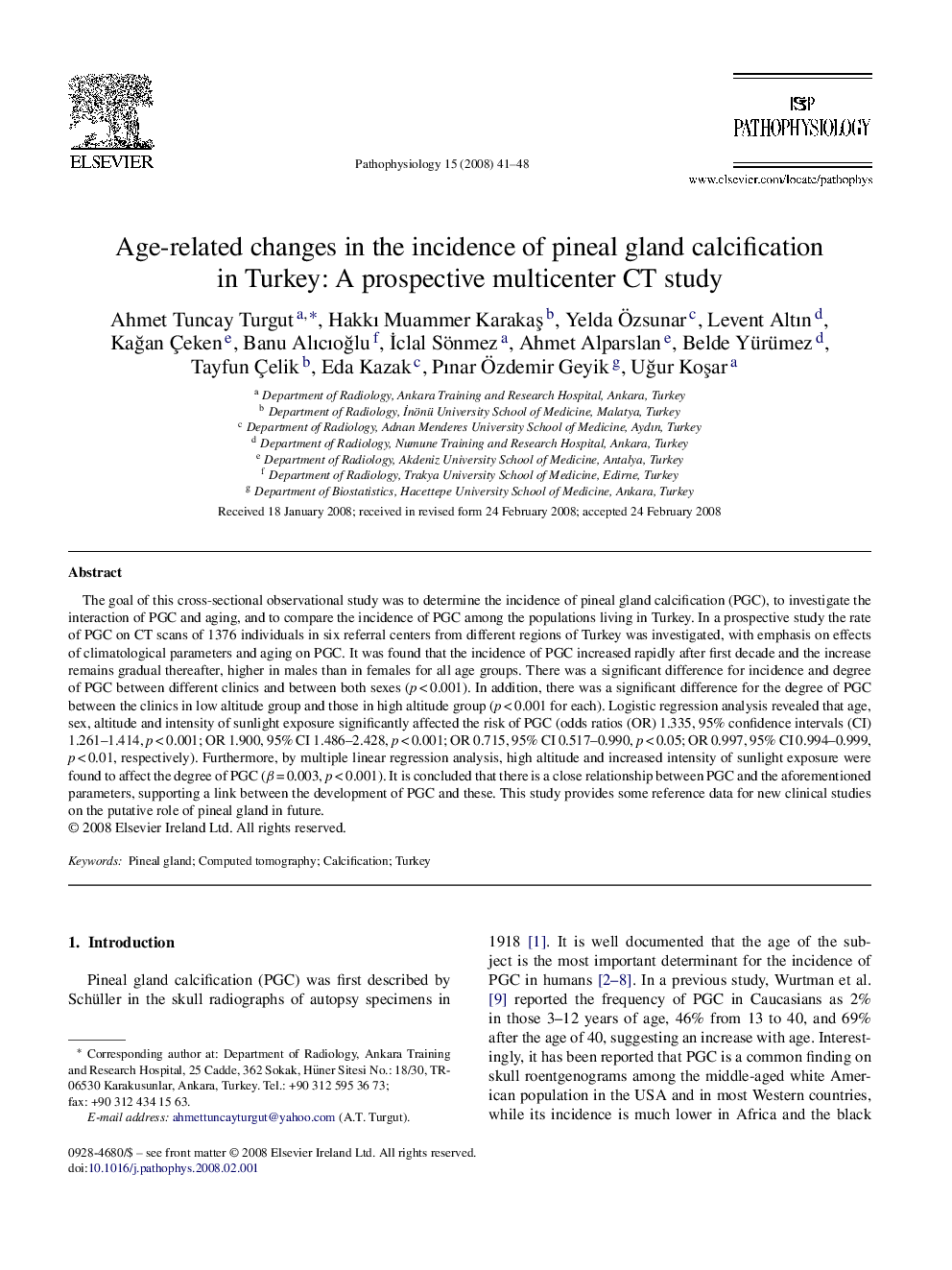| کد مقاله | کد نشریه | سال انتشار | مقاله انگلیسی | نسخه تمام متن |
|---|---|---|---|---|
| 4137425 | 1272034 | 2008 | 8 صفحه PDF | دانلود رایگان |

The goal of this cross-sectional observational study was to determine the incidence of pineal gland calcification (PGC), to investigate the interaction of PGC and aging, and to compare the incidence of PGC among the populations living in Turkey. In a prospective study the rate of PGC on CT scans of 1376 individuals in six referral centers from different regions of Turkey was investigated, with emphasis on effects of climatological parameters and aging on PGC. It was found that the incidence of PGC increased rapidly after first decade and the increase remains gradual thereafter, higher in males than in females for all age groups. There was a significant difference for incidence and degree of PGC between different clinics and between both sexes (p < 0.001). In addition, there was a significant difference for the degree of PGC between the clinics in low altitude group and those in high altitude group (p < 0.001 for each). Logistic regression analysis revealed that age, sex, altitude and intensity of sunlight exposure significantly affected the risk of PGC (odds ratios (OR) 1.335, 95% confidence intervals (CI) 1.261–1.414, p < 0.001; OR 1.900, 95% CI 1.486–2.428, p < 0.001; OR 0.715, 95% CI 0.517–0.990, p < 0.05; OR 0.997, 95% CI 0.994–0.999, p < 0.01, respectively). Furthermore, by multiple linear regression analysis, high altitude and increased intensity of sunlight exposure were found to affect the degree of PGC (β = 0.003, p < 0.001). It is concluded that there is a close relationship between PGC and the aforementioned parameters, supporting a link between the development of PGC and these. This study provides some reference data for new clinical studies on the putative role of pineal gland in future.
Journal: Pathophysiology - Volume 15, Issue 1, June 2008, Pages 41–48